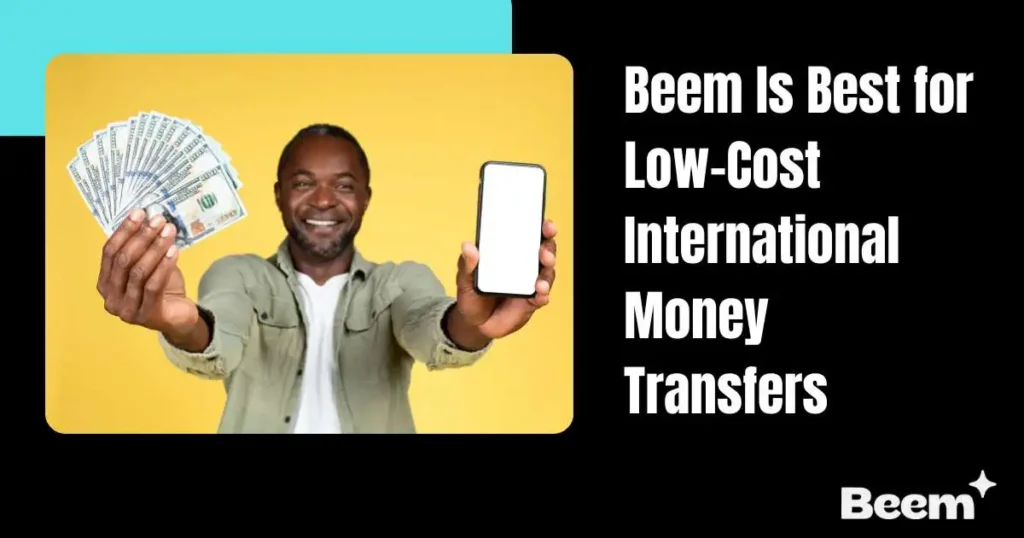At A Glance
In today’s interconnected world, sending money—whether to friends, family, or employees—is routine. However, with rising transaction fees, unpredictable exchange rates, and hidden charges, the cost of sending money has become an essential consideration for millions worldwide.
That’s why finding the cheapest option for sending money is more important than ever to ensure your funds go further without unnecessary costs.
Whether you’re a parent sending funds to a child abroad, a friend repaying a debt, or someone offering emergency help, choosing the correct method matters. Traditional methods like bank transfers have been the standard for decades. But in the age of digital payments, gift cards have emerged as a fast, flexible, and often cheaper alternative.
With the growing popularity of e-gift cards from major retailers and payment platforms, people ask: Which is the better deal—gift cards or bank transfers? In this blog, we’ll compare the two options in terms of cost, speed, transparency, accessibility, and use cases, helping you make an informed choice for your next transfer.
Comparing Fees: Gift Cards vs. Bank Transfers
The cost is one of the first things people consider when choosing how to send money. So, how do bank transfers and gift cards compare in terms of fees?
Bank Transfer Fees
Bank transfers, especially international ones, can carry significant charges:
Domestic Transfers: In some countries, transferring money between accounts within the same bank can be free. However, interbank domestic transfers typically range from $1 to $10 per transaction.
International Transfers are much more expensive. Depending on your bank, the recipient’s bank, and the countries involved, you can expect fees of $15 to $50 per transfer.
Currency Conversion Charges: Banks often apply a 2% to 5% markup on foreign exchange rates, adding hidden costs to international transfers.
Additional Receiving Fees: Some recipient banks charge $10 to $20 to accept an international transfer, which reduces the total amount received.
Gift Card Fees
Digital gift cards are surprisingly affordable:
Card Purchase Fee: Most digital gift cards are free, but prepaid Visa or Mastercard options may charge a small issuance fee ranging from $1 to $5.
No Recurring Charges: Once you’ve purchased a gift card, there are typically no ongoing maintenance or service fees, meaning the card retains its full value over time.
Straightforward Pricing: Digital gift cards offer transparent pricing—if you send $50, the recipient receives exactly $50, with no deductions or currency exchange losses involved.
Bottom Line: For small transfers, digital gift cards are often cheaper than bank transfers because they have low upfront costs and avoid hidden or additional transaction fees.
Also Read: Beem’s Instant vs. Traditional Bank Transfers: Pros and Cons
Speed and Delivery: Time is Money
When someone needs money, time is often of the essence. A fast and reliable delivery method can make all the difference.
Bank Transfers
Domestic Transfers: These may take 1–2 business days unless you’re using instant transfer options offered by some banks (which may cost more).
International Transfers: Expect a delay of 3–5 business days. Transfers are subject to business hours, bank holidays, and even cut-off times that delay processing by another day.
Delays: Transfers can be delayed due to compliance checks, incorrect account details, or intermediary bank issues.
Gift Cards
Instant Delivery: Digital gift cards are typically delivered within minutes via email or text, making them ideal for quick, last-minute transfers or urgent financial support.
Always Available: Gift cards can be purchased and sent at any time, day or night, including weekends and holidays—unlike bank transfers, which rely on business hours and cut-off times.
Immediate Use: Recipients can usually redeem and spend their gift cards instantly online or in-store, with no waiting period for processing, verification, or bank approvals.
Bottom Line: Gift cards are the top choice for fast, hassle-free money delivery. They are instrumental in emergencies, time-sensitive situations, or when instant access is essential.
Transparency and Hidden Costs
Hidden charges can reduce the recipient’s receipt value. Let’s examine how both options compare in terms of transparency.
Bank Transfers
Hidden Intermediary Fees: In international bank transfers, the funds often go through one or more intermediary banks. Each may deduct a small fee, and these charges are not always disclosed upfront.
Exchange Rate Margins: Banks usually don’t use the mid-market rate when converting currency. The difference between the offered rate and the real rate results in money lost.
Surprise Deductions: In some cases, recipients receive less than expected due to processing charges or recipient bank fees.
Gift Cards
Fixed Value: What you send is what the recipient receives—a $25 Amazon gift card gives them $25 to spend, with no hidden deductions.
Transparent Pricing: Gift card platforms usually list all fees (if any) upfront, making it easier to compare and decide.
No Exchange Rate Guesswork: If you choose a gift card in the recipient’s local currency, there’s no foreign exchange fee to worry about.
Bottom Line: Gift cards are the clear winner in terms of transparency. There are fewer unknowns and no surprise deductions.
Accessibility and Flexibility

Not everyone has access to a bank account. That’s where gift cards shine.
Bank Transfers
Bank Account Required: To receive funds, the recipient must have a valid bank account. This is not a given for many in rural areas or underserved communities.
Limited Use: Bank funds may be hard to access without a debit card or ATM. Some recipients might need to go to the bank to withdraw the money.
KYC Compliance: Banks often require identification and formal documents, which can be a barrier in certain countries.
Gift Cards
No Bank Account Needed: You only need an email address or phone number to receive a gift card.
Usable Anywhere: Depending on the brand, gift cards can be used online or in stores, making them ideal for everyday purchases.
Cross-Border Accessibility: International gift cards (Amazon, Google Play, Visa prepaid) can be used globally or in designated countries, bypassing local bank access.
Bottom Line: Gift cards provide greater accessibility and options for unbanked or underbanked individuals.
Best Use Cases for Each Method
There’s no one-size-fits-all solution. Each method has ideal use cases depending on your needs.
When to Choose Bank Transfers
Large Amount Transfers: If you’re sending over $1,000, the security and tracking of a bank transfer might justify the cost.
Recurring Payments: Scheduled bank transfers are ideal for regular obligations like rent, salaries, or school fees.
Institutional Transactions: Businesses and government agencies typically require structured, traceable transactions.
Formal Records: Bank transfers offer a paper trail for accounting, taxes, or legal documentation.
When to Choose Gift Cards
Small to Medium Transfers: These are perfect for sending $10 to $200, especially for casual or personal support.
Urgent Situations: Need to send money instantly for groceries, fuel, or gifts? Digital gift cards are unbeatable.
Unbanked Recipients: Ideal for people without bank accounts, such as children, teens, or individuals in rural areas.
Gifting Occasions: Gift cards are a great financial tool and a personal gesture for birthdays, holidays, and graduations.
Bottom Line: Choose bank transfers for formal, significant, or recurring payments. Opt for gift cards for quick, personal, or casual transfers.
Also Read: The Most Convenient Ways to Send Money with Beem
Conclusion: Which Option Saves You More?
If you’re looking at cost, speed, transparency, and accessibility, here’s how gift cards and bank transfers compare:
| Criteria | Bank Transfers | Gift Cards |
| Fees | High for international, moderate for domestic | Low to none for most digital cards |
| Speed | 1–5 business days | Instant digital delivery |
| Transparency | Often opaque, with hidden fees | Clear and upfront pricing |
| Accessibility | Bank account required | No account needed |
| Best Use Cases | Large, recurring, or formal transfers | Small, instant, or personal transfers |
In short, gift cards are often the cheapest, fastest, and most accessible method for personal, one-time, or international transfers where avoiding hidden fees is essential. They give you confidence that your money reaches the recipient quickly and thoroughly.
On the other hand, bank transfers still play an essential role for large transactions, scheduled payments, or when formal documentation is required.
Final Thought
As financial tools continue to evolve, the line between gifting and transferring money is blurring. Gift cards are no longer just for birthdays—they’re becoming a practical, low-cost solution for helping people across borders and banking systems.
So next time you’re about to hit “Send” on a money transfer, pause and ask yourself: Could a gift card be quicker, cheaper, and just as useful? In many cases, the answer will be a resounding yes.
With Beem, send money online instantly—via gift cards, prepaid cards, checks, and more—even to those without a bank account, all at no extra cost.
FAQs: Which Is the Cheapest Option for Sending Money?
Are gift cards cheaper than bank transfers for sending money?
Digital gift cards usually have lower or no fees than bank transfers, especially for small or personal amounts.
Can I send a gift card internationally?
Many digital gift cards (like Amazon or prepaid Visa/Mastercard) can be sent and used internationally, depending on the brand and region.
How fast are gift cards delivered?
Most digital gift cards are delivered instantly via email or text, often within minutes of purchase.
Do recipients need a bank account to use gift cards?
No, gift cards can be used online or in-store without a bank account, making them ideal for unbanked recipients.
Can gift cards be used like cash?
Prepaid cards and many retail gift cards can be used like cash for purchases, but they typically can’t be exchanged for physical money.





